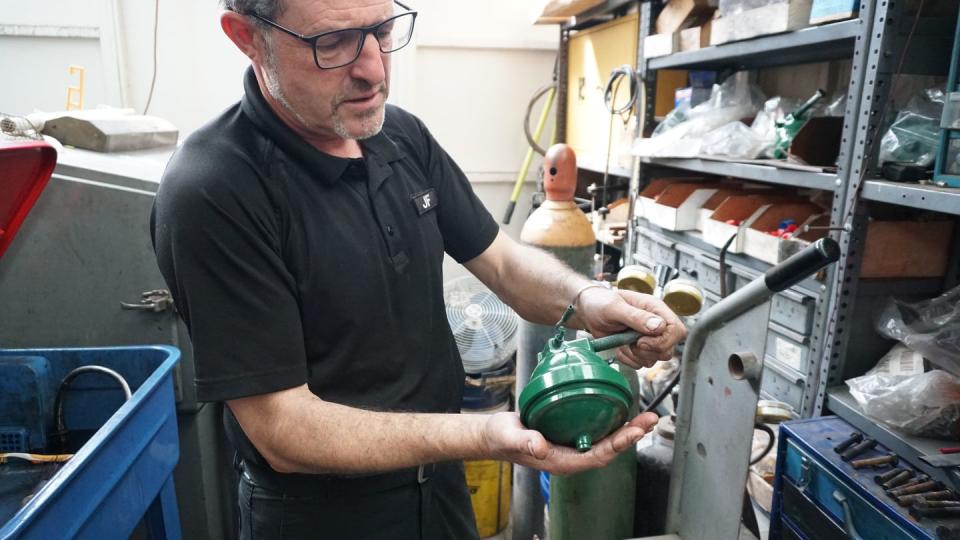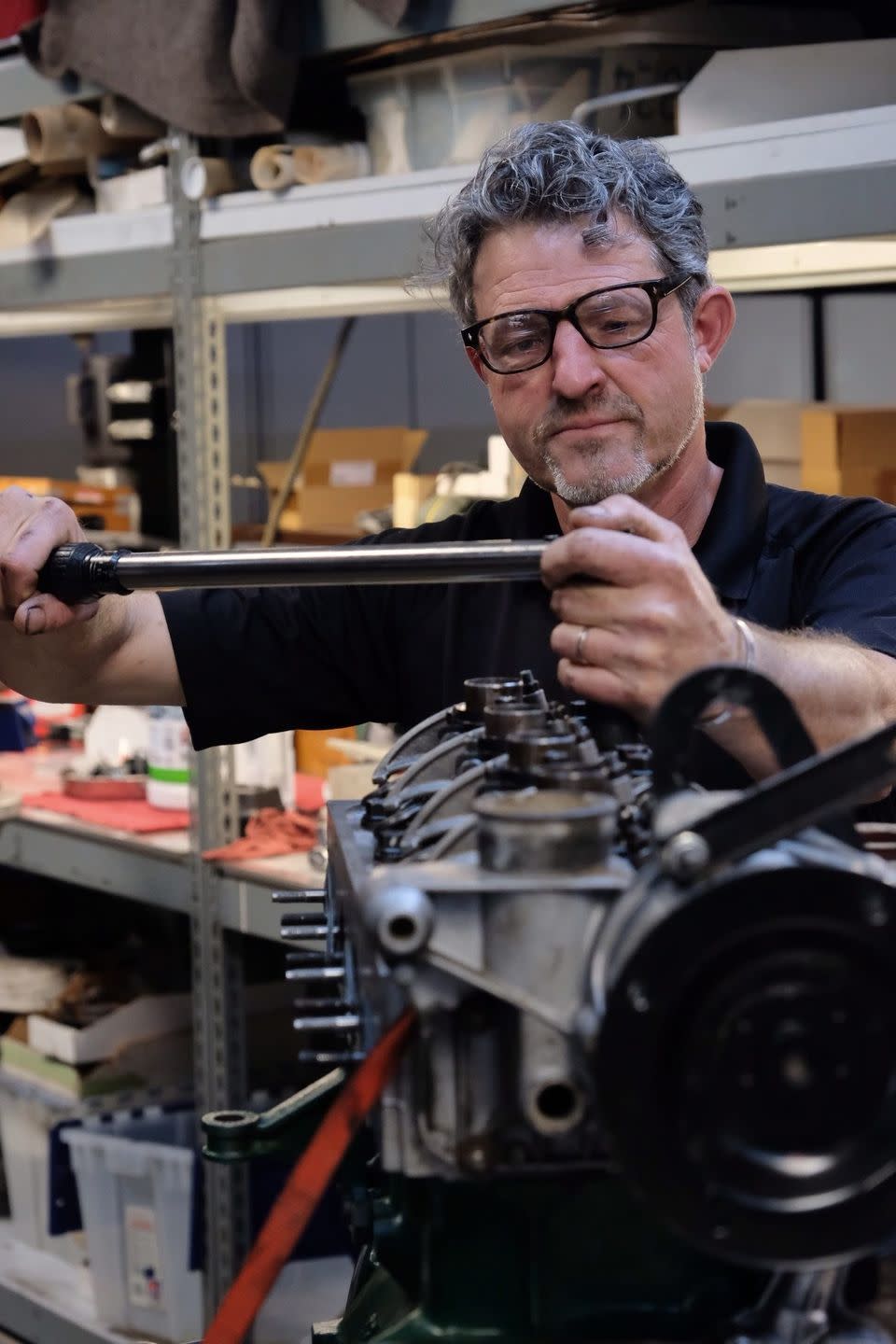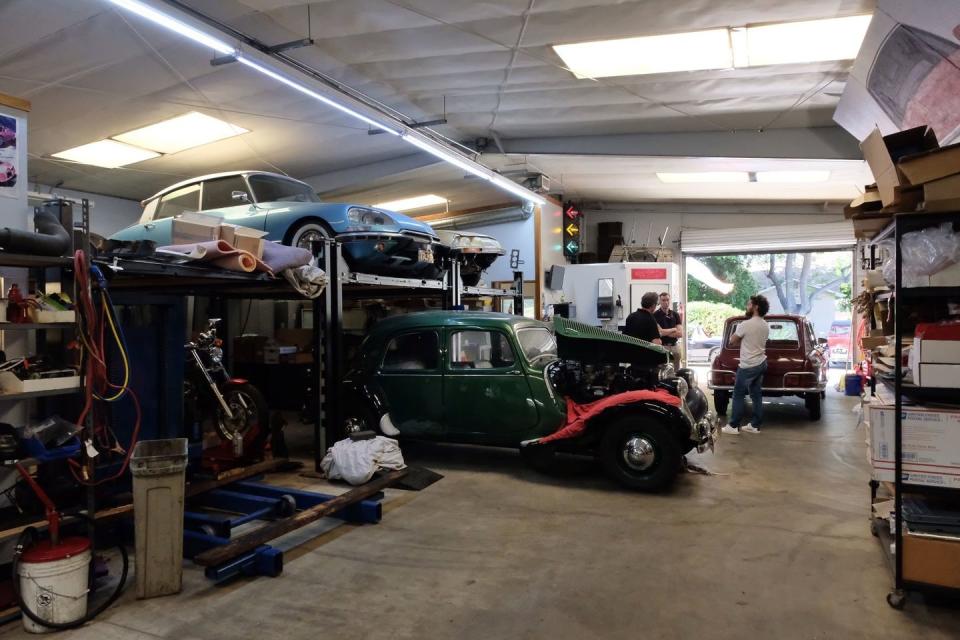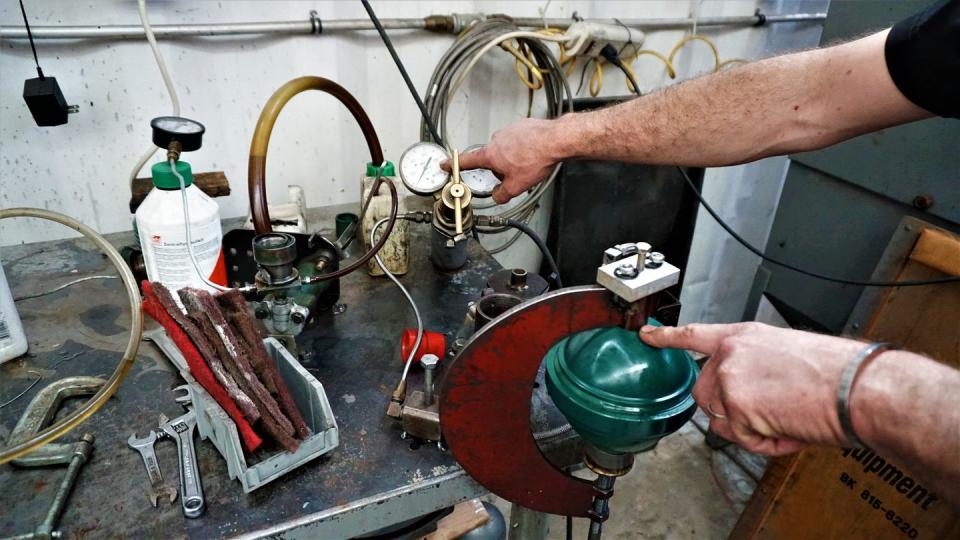

-
French cars are cool, Citroëns are French, therefore Citroëns are cool.
-
Keeping Citroëns alive is tres difficile.
-
JR Martin of Marrs Automotive can fix your Citroën and fix it right.
There has always been a certain je ne sais quoi about French cars. They have character, fashionably stylish design, and a certain joie de vivre. Look what they’re doing, making me speak French! I can’t help it. Maybe you like them too. Maybe you have even owned a French car at one time or another. It’s even possible that you’ve forgotten that they would sometimes, inexplicably, and at the worst possible time, break.
That was the reason—one of the reasons, anyway—French cars never did so well here. It took a brave and hearty soul, preferably a brave and hearty soul with good mechanical skills, to import one, or to buy it off the showroom floor during the time from 1949 to 1975 when they were officially imported.
And of those beautiful French cars, perhaps the most Continentals was Citroën. They were scary, too, like that French model you wanted to ask out but were afraid you’d be chewed up, spat out, and left destitute in some unfamiliar Metro station with your expired 24-hour Metro card.

Citroëns went up and down, remember? They raised and lowered themselves when they started and stopped, as if riding on a languorous cushion of equal parts French creative engineering and magic. It was that parlor trick, the hydro-pneumatic suspension, which still scares people away from buying them.
“What if that hydraulic thing breaks?” people cry. “I don’t know how to fix that! No one knows how to fix that!”
Au contraire mon frerebecause there is a certain bon ami of les voitures Citroën in Southern California who knows exactly how to fix it.
“I’m a mechanical engineer,” said Jean-Francois (JF) Martin, owner and mechanic at Marrs Automotive in Santa Clara, California. “Yes, and then autodidact (self-taught) and then I just started liking cars. Just one day I was like, ‘That’s interesting. I’d like to know how it works.’”
He started with a moped when he was just 14 in his native France. It was a 1963 Peugeot BB 63, given to him with a seized engine. He got it running again, of course.
“And then I just learned how things were put together.”
He replaced the rings on the piston of the two-stroke, replaced the points and condenser, and then, after that, “…the rest is history.”
Next came a Peugeot 403 and on into Citroëns. He came to love Citroëns because his uncle, who is also his godfather, was a Citroëns salesman. Every time he visited, he had a different Citroëns: first the GS, then the CX, then many different models of the XM, then a DS 23 with fuel injection.
“It was blue on blue and for me, it was a spaceship—you had the turn signals, you know, off the roofline, and then it went up and down. And it goes really fast and in turn my uncle is kind of crazy driving. That’s when you could drive fast in France. And that car really made an impression on me. It gives me goosebumps even now.”
I checked, it did.
“The design of those cars is just so unique, so beautiful. And then such a massive melting pot of really brilliant engineering.”
Then—quelle surprise!—his uncle/godfather gave him the car, the DS 23, the melting pot of brilliant engineering, his, all his.
“I was 17 and a half and I started fixing it up, and then I was 18, you have to be 18 in France to drive. When I was 18 plus one day—boom—I was down at the local DMV.”

He worked for Delphi, first in France then in Ohio, then for Cosworth Racing, then for Honda Performance Development where they built the race engines in Santa Clarita. Which brought him to Marrs Automotive, a large garage full of French cars – mostly Citroens—stacked two high on lifts, being repaired.
Those scary hydraulics? There is a special building for them behind the big garage, full of special tools welded to a special bench. But it’s not magic. He showed me. The system is just a few relatively small spheres with a rubber diaphragm inside. Hydraulic pressure pushes on something, or is it pneumatic pressure?
“It’s both,” he said, holding a sphere like that statue of the baby Jesus holding an orb. “You have the hydraulic side on the suspension side where the pump is pumping the fluid and making it move and pressurizing it. And then here,” (he pointed to the orb/sphere), “you have a cloud of nitrogen. So that’s why it’s called olio pneumatic—olio for oil, pneumatic for air.”
That’s not all.
“This is the diaphragm that’s inside,” (he held up a rubber half-ball). “It’s mounted this way (fitting perfectly inside the sphere). And then the nitrogen just pushes it out this way. And then when the oil comes in, it does this (applies pressure) and it compresses the gas. So the gas is actually your mechanical spring, just like a coiled spring on the car. And then when these get really low, while there’s less spring, that’s how the car gets much, much harder on the suspension, that goes through the lines to the corners of the car and raises or lowers it, depending.”

See? Easy peazy.
The spheres don’t last forever, typically six to eight years. The thing that wears out is the rubber diaphragm, and there’s a company in France that still makes them. There are hydraulic/pneumatic systems all through the car, including steering and brakes.
The whole Marrs Automotive is like that, mysterious and seems magical things that aren’t really so mysterious or magical after all. It’s just that the number of people who can pull back the curtains and fix them is dwindling. Martin lists them all across the country. There aren’t that many, and he knows them all by name.
“Dave Burnham (outside Albany, New York) is going to retire; Chris Middleton (Seattle) is, sadly, ill; David Hume in Kentucky, I think he’s got a couple more years; Lon (Price of Garage Longueville in Santa Cruz) has already backed off big time; Paul Heilig in San Diego is probably a couple years away from retirement also.”
And that’s it. How did we get to this?
“Simply because when they were in their 20s, the cars were brand-spanking new, in the 1970s. And then they started working on them and they stuck to them. Well, time goes by, the cars are 50 years old, those gentlemen get a little older and then they are close to 70 and they want to retire. So there’s a massive void in the Citroën community and the community is always concerned about that.”
He came to this realization when he was still at HPD making those race engines.
“So I did a little bit of a market study, looking at the future, you know, three-year, five-year, 10-year plan.”

At that time the local Citroën guy was a friend of his named Jerry Hathaway. Hathaway owned Marrs Automotive. When Hathaway passed away, sadly, they were friends for a long time, Martin bought his business and all the parts. Martin is “only” 50, pretty healthy, and he doesn’t plan on going anywhere.
So the lesson in all this? I say, buy a DS. Or an SM. Or an XM. Don’t be afraid. So what if you have to move to Southern California to be near Marrs Automotive? Southern California is nice, and you can drive your car year-round. It’s like the South of France. And there’s a very nice Citroën Car Club that you can join. They all like Martin, most of them get their cars worked on by him. And then you can experience a car with some character, some design, some joi de vivre in this sea of bland crossover utility blobs that passes for an automotive fleet nowadays. At least consider it.
and now, bonne chance mes amis, bien conduire.
Share your own French-car-owning nightmares stories in the comments below.
